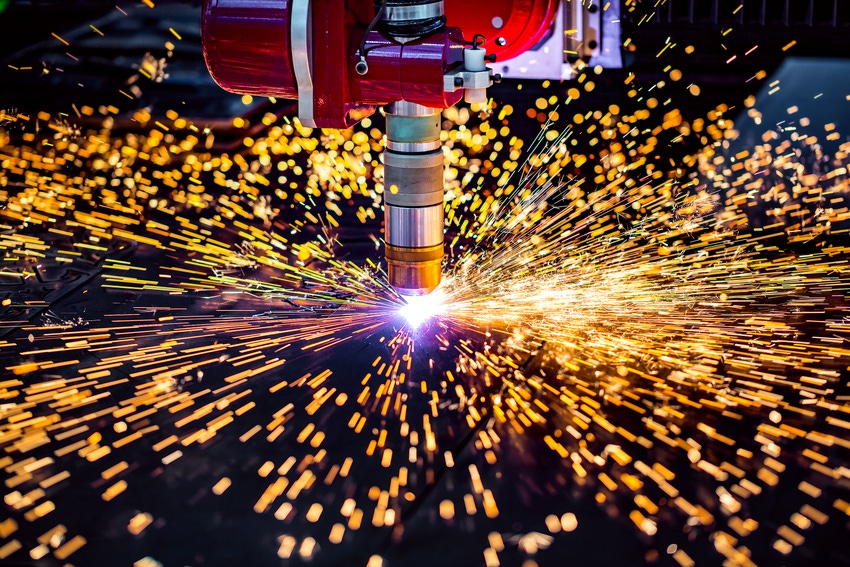April 11, 2018

Key takeaways
Neither AI nor the IoT alone can add significant value to industrial applications - they must be used together
The introduction of intelligent sensor technology and software in industrial equipment will require businesses to learn lessons from the software and ecommerce world
Rich Rogers, SVP for IoT Product & Engineering at Hitachi Vantara, believes these two disruptive technologies are integral to the future of industry
By Ciarán Daly
SEATTLE, US - The potential of the Internet of Things is absolutely vast, yet latent. B2B investments in IoT solutions, apps, and technologies is estimated to reach $267B by 2020. What's more, 50% of that spending is likely to be driven by discrete manufacturing, transportation & logistics, and utilities - in other words, the Industrial Internet of Things. But can the Industrial IoT really deliver on the hype without a means of making connectivity actionable and intelligent?
Boasting a mind-boggling array of industrial assets, Hitachi builds bullet trains, power plants, MRI machines, electron microscopes, conveyor belts, monster construction equipment like dump trucks and excavators, and much more - and at global scale. Today, the firm is working to ensure all of these assets become smart, connected offerings using Lumada, Hitachi's dedicated end-to-end Industrial IoT platform.
[caption id="attachment_11115" align="alignleft" width="285"] Rich Rogers, Industrial IoT entrepreneur and former SVP for IoT Product & Engineering, Hitachi Vantara[/caption]
Rich Rogers, Industrial IoT entrepreneur and former SVP for IoT Product & Engineering, Hitachi Vantara[/caption]
Now at the tail-end of a nearly 12 year run with Hitachi Vantara, the global conglomerate's specialized IoT division, Rich Rogers has been involved firsthand in unleashing the transformations intelligent sensor technology promises for industry. When we speak, Rogers is in his last week with the company, before he plans to return to his start-up roots. For him, AI and the Industrial IoT 'absolutely' go hand-in-hand.
"I don't really think one can add tremendous value without the other," he says. "When we boil it down, it's about connecting devices and bringing them to life through software, and that's what we're looking to do with every single industrial asset across our entire portfolio: look at it through the two lenses of connectivity and intelligence through software."
It is these two lenses - or 'phases' - by which the Industrial IoT can best be understood. Firstly, you need to get connected by hooking up formerly 'dumb' machines with onboard computers, software, and sensors which can monitor any variable regarding a machine's output, health, or performance. The much-hyped consumer IoT of the past five years can be understood through this lens: giving machines the necessary capabilities to collect and send data back to a central platform, such as the cloud, where it can eventually be crunched.
It's not enough, however, to simply sit on growing mountains of Industrial IoT data, which on its own is worthless beyond providing you with a quantitative overview of your industrial processes. You have to bring these machines to life using this sensor data. This is where AI comes in.

Related: Ocado CTO - AI Is The One Tech To Rule Them All
Industry must learn from software
In practice, the applications of this technological fusion are manifold. Firstly, it enables industry to repurpose the lessons of software development for the physical, industrial world. Intelligent IIoT solutions, for example, will someday enable large organisations to 'patch' their machinery on-the-fly with new capabilities, as with an operating system or videogame.
Take the example of Tesla, Elon Musk's autonomous vehicle monolith. Tesla have one product - a vehicle - and have worked for almost 15 years to try and automate the manufacturing for what is essentially a software-based product. One day, Tesla owners were able to download a new software patch, which was able to bring autonomous driving capabilities to that very same vehicle. The day before, it was purely human-driven; the very next day, with nothing more than a software patch, it had self-driving capabilities.
For Rogers, this opens up a world of possibilities for new thinking about industrial processes. "Software companies used to rely on three-year release cycles, but we've now moved to agile software development. Look at Amazon, who, for example, are pushing new code to the cloud every single day which is being consumed by millions of people," says Rogers. "Now, we want to take a lot of the same concepts we were using in the software and ecommerce world, and bring them to the industrial world."
Using analogies from ecommerce, Rogers believes that industry will be able to adopt many of the agile business lessons learned by the software world. Today, online retailers are able to conduct A/B testing for product ads, in order to select the most effective ad to push out to users. Thanks to AI and the Industrial IoT, this same design thinking-led approach might soon be applied to industrial hardware.
"We wanna be able to do AB testing on physical products," Rogers explains. "We want the features that are being consumed to relay data back to the factory so that we can build a smarter, more efficient, and more effective product in the future. There might be features on these machines that never get used - we don't know. We don't have that data today, because we just have dumb machines scattered around the world. As soon as we get them connected, we can really monitor how they're being deployed, consumed, and utilised. We can start to feed that right back into the manufacturing process, from design and build onwards, and push out better and better products to customers."
Transforming service and maintenance with AI and the Industrial IoT
AI in the IIoT also has the potential to revolutionise maintenance paradigms in industry. A major issue facing industrial equipment providers and their clients today is the need for regularly scheduled maintenance, in which thousands of people are set forth onto millions of dumb machines at weekly or monthly intervals. Often, technicians show up during their scheduled slot and the machines are in perfect working order. At other times, if they'd been there a week earlier, they could've avoided a costly maintenance situation.
Moving from regular maintenance to proactive, data-informed servicing - just-in-time or 'predictive' maintenance - is one key challenge facing industrial operators like Hitachi today, and is only possible with a fusion of AI and IoT technology. Combining advanced data analytics with AI insights will give engineers the ability to predict exactly when equipment will need servicing.
"We're tracking the health and the status of all of our Hitachi gear, and we're sending people to do repairs when they're needed. Every visit is going to become very high value, and not necessarily wasted. It's not just a matter of going out there when it makes sense, but going out and being highly efficient," argues Rogers. "Machines need almost continuous penetration testing. A lot of that is going to take place through AI and machine learning, which can look for patterns or anomalies or erroneous activity and then surfacing that through alerts or notifications to the humans monitoring the fleet. There's no way that us as human operators could perform that type of monitoring and analysis across, say, 500,000 elevators. We absolutely need AI software in order to scale that."
[caption id="attachment_11113" align="alignright" width="500"] Richard Branson at the launch of Virgin Trains Azuma, a new high-speed train developed in partnership with Hitachi[/caption]
Richard Branson at the launch of Virgin Trains Azuma, a new high-speed train developed in partnership with Hitachi[/caption]
Rogers' former team is currently working with Virgin Rail to deploy high-speed trains across the UK, in what you could call BTaaS (Bullet Train As A Service). He believes that the way Hitachi can make the project a win-win scenario for Virgin Rail and the UK is to offer predictive maintenance as a service: "Almost everything in these new trains has sensors built into it, from the doors to the toilets."
Someday, these efforts might even extend to what Rogers calls 'just-in-time training'. Using augmented reality and AI, service personnel might someday be able to perform maintenance and repairs on equipment they've never seen or interacted with before.
For Rogers, this is just the start of what he views as the next industrial revolution, in which everything will become connected, smart, and brought to life through software. It's just a matter of time until global industry sees transformative returns from these technologies, and in the meantime, leaders must be tenacious and patient. "We know that this is coming: it's inevitable, it's unavoidable, but it's also super hard to get there. Everyone who wants to be part of this game going forward is going to have to go through a shared journey. It's gonna be a massive, massive challenge, but the people that can figure this out now will absolutely disrupt their space within these industry verticals."

Based in London, Ciarán Daly is the Editor-in-Chief of AIBusiness.com, covering the critical issues, debates, and real-world use cases surrounding artificial intelligence - for executives, technologists, and enthusiasts alike. Reach him via email here.
About the Author(s)
You May Also Like


.jpg?width=700&auto=webp&quality=80&disable=upscale)
.jpg?width=700&auto=webp&quality=80&disable=upscale)
.jpg?width=700&auto=webp&quality=80&disable=upscale)
.jpg?width=300&auto=webp&quality=80&disable=upscale)
.jpg?width=300&auto=webp&quality=80&disable=upscale)
.jpg?width=300&auto=webp&quality=80&disable=upscale)
.jpg?width=300&auto=webp&quality=80&disable=upscale)
.jpg?width=300&auto=webp&quality=80&disable=upscale)